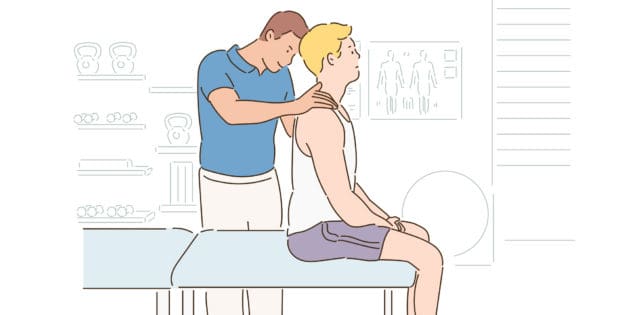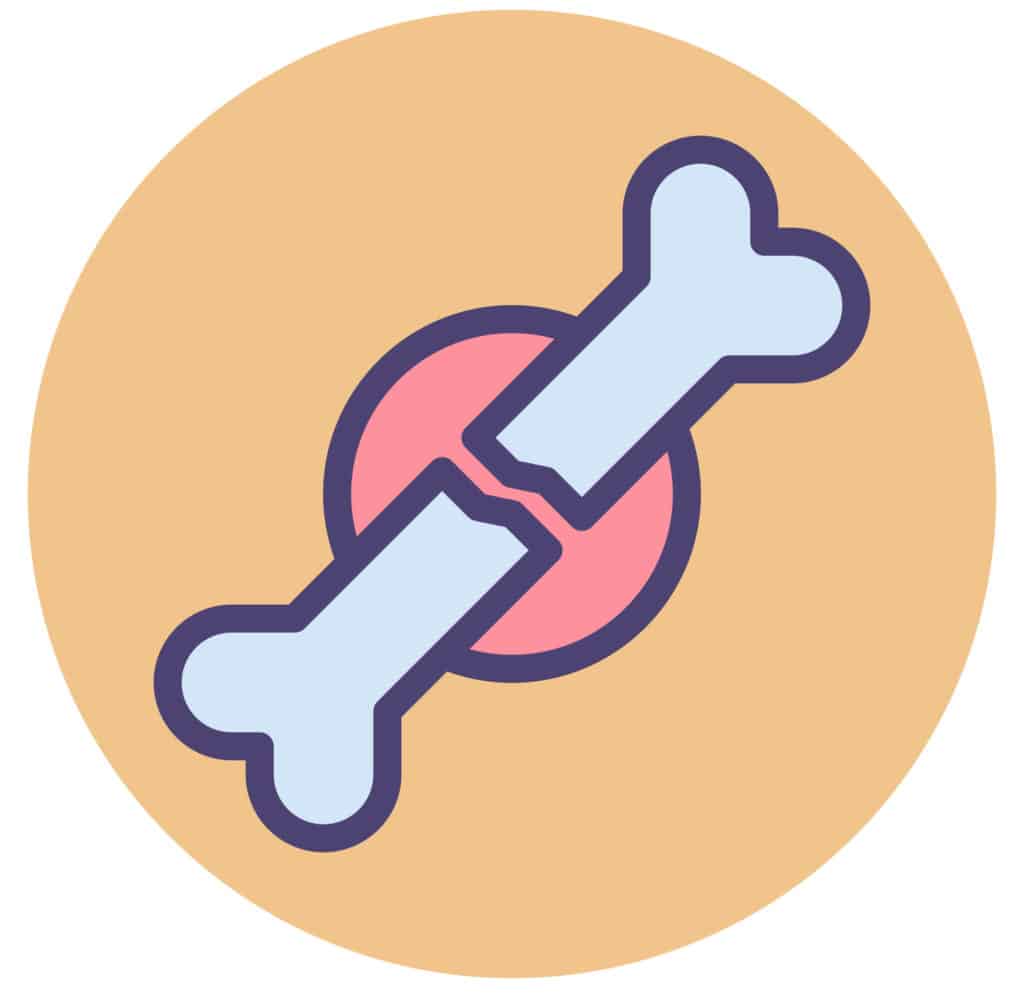We don’t need to tell you about the importance of your shoulder. You wouldn’t be reading this article if you weren’t seeking help for your shoulder pain.
After all, life can become really difficult when your shoulder isn’t functioning properly. Your range of motion becomes increasingly limited, your mental health takes a bashing, and your daily horizon can feel like social suffocation.
Structured by a group of four muscles and their tendons (a cord that connects muscle to bone) known as the rotator cuff, your shoulder is a complex connective area of your body. And, as one of our most complicated joints, our daily life pivots upon the health of our shoulders.
From getting dressed, to commuting, to engaging with sports – your shoulder and arm need to be working in harmony. Otherwise, chronic shoulder pain is on the menu.
More Blogs From Intecore
What Is Spinal Stenosis, And How Can I Get Relief?
Tennis Elbow: What You Need To Know
How Common Is Shoulder Pain?
Shoulder pain remains one of the most common ailments affecting adults in North America. In fact, shoulder pain is responsible for almost 16% of all musculoskeletal complaints.
As you get older, your risk of experiencing pain within your shoulder region increases, and there’s a wide variety of common conditions to watch for – ranging from rotator cuff disorder, tendon injuries, arthritic conditions, adhesive capsulitis, and shoulder instability, to tendinopathy and tears.
If affliction lasts longer than six months, then the medical definition changes and chronic pain is diagnosed.
But Is It Really Your Shoulder?
This may sound silly, but it might not be your shoulder that’s causing your shoulder pain. Other parts of your body could be feeding discomfort into the shoulder region like a domino effect.
Certain neck/back problems, including arthritis and disc herniations, can masquerade as shoulder pain.
So, how can you determine if you’ve got a shoulder injury or not? Ask yourself:
- Is your shoulder sore and painful?
- Are you unable to move it?
- Can you lift and do other movements even though your shoulder hurts?
- Or is moving it impossible?
- Do you feel pressure on the joint as if it is ready to “pop” out of its socket?
Do any of these aspects apply to you? If they do, then you’ve most likely injured your shoulder. Now it’s time to get checked over by a doctor or your physical therapist.
If the pain is really getting to you, try utilizing heat therapy (or a cold pack) in the meantime. By combining heat therapy with periods of rest, minor shoulder injuries usually get better in time.
Yet, everyone is different and therefore recovery is unique to each individual. Depending on your overall health, your MD or physical therapist may recommend a support sling to ease pain by limiting movement.
Those aren’t the only checks you should make, though. There are signs of more severe injury that you should not ignore.
If your hand or arm feels weak or numb, or you are unable to lift/move your shoulder at all, then you should seek emergency medical treatment.
You should also seek immediate professional help if your shoulder joint appears deformed or “out of place”, or there’s a sudden intense pain alongside inflammation and swelling. These symptoms indicate that the shoulder may be dislocated, or you have suffered a fracture.
What Could Be Causing My Shoulder Pain?
As our sister website has previously covered, most shoulder issues fall into these four categories:
- Arthritis
- Fractured Bone
- Tendon Inflammation or tearing
- Instability
Occasionally, shoulder pain can be a warning sign of a heart attack. But it is likely to be accompanied by restricted breathing and tautness in the chest. You should call 911 for emergency medical attention if you have these symptoms.
What Is Shoulder Instability?
Shoulder instability is where the head of the upper arm bone (humerus) is forced out of the shoulder socket. This situation mostly occurs after a sudden injury, or if the joint has been overused when playing sports.
You may hear this condition referred to as a ‘dislocation’, where the condition can be partial or complete. When a partial dislocation takes place, only the ball of the humerus partly pops out of the socket. A complete dislocation is where the ball completely removes itself from the socket.
After you’ve torn your ligaments, or caused the tendons/muscles/ligaments around your shoulder to loosen, then the risk of further dislocations in future becomes more common.
Repeated occurrences then cause throbbing and shooting pains, mated to unsteadiness when raising your arm or moving it away from your body. Repeated dislocations can also become a leading cause of arthritis.
Shoulder Pain: Arthritis
Arthritis in the shoulder joints is extremely common, and causes chronic pain. There are various kinds of arthritis, but the typical variant in the shoulder is osteoarthritis; also known as ‘wear and tear’ arthritis.
The causes range from overuse of the joint across years of playing sports, to an unhealed injury, or a timely result of not taking care of yourself. The general effects of aging also play a part.
It’s a hard one to initially track, as it’s difficult to feel the encroaching effects of arthritis until it’s too late. The condition develops very slowly, and once you feel pain or discomfort in your shoulder, it will only get worse with time’s onward march.
Individuals who feel the effects of arthritis in this area often try to avoid moving their shoulder, as they believe this lessens discomfort. However, this can actually tighten the soft tissues of the shoulder joint, restricting the range of movement and ultimately limiting mobility.
Symptoms include pain, stiffness, and swelling, and are often related to tears in your rotator cuff, damage to the lining of the joint, or illness (such as an infection).
Shoulder Pain: Tendon Issues
Age-related degeneration (alongside the after-effects of injury) causes a shift-change in the tendons, and causes tears to appear in the muscles. Regardless of how impactful this tearing starts off, it’s going to hurt!
When the tendon separates from the bone, you are going to know about it. Then there’s Bursitis to watch out for, and it’s another common tendon-related issue.
To understand Bursitis, we need to know about the small fluid sacs known as Bursae. These sacs reside between your shoulder bones, and act as a cushion to reduce friction between interconnected muscles and bones.
Bursitis strikes when these Bursae become inflamed, where the swelling creates a condition known as Acromion. The overall result creates the conditions for subacromial bursitis to develop.
Then there’s Tendinitis. This is where the rotator cuff becomes damaged and instigates inflammation and tenderness just outside the shoulder joint.
Shoulder Pain: Bone Fractures
Don’t try to convince yourself that a fracture is nothing to worry about. A fracture is a broken bone, make no mistake about it. A shoulder fracture most commonly involves the collarbone (clavicle), upper arm bone (humerus), and the shoulder blade (scapula).
The cause of bone fractures almost always comes from high-energy injuries, motor vehicle collisions, or a fall from a standing height.
Broken bones cause severe discomfort and shoulder pain, alongside swelling and bruising.
Can A Physical Therapist Help With My Shoulder Pain?
You betcha.
If your doctor refers you to a physical therapist, then you are in great hands! That said, you don’t need a doctor’s referral to reach out and find help. You can get in touch with a physical therapist anytime. Why not give us a call?
We can help you out in various ways. Firstly, we’ll be able to check your range of motion and examine your functional abilities. After that, we’ll work with you to build a personalized plan of treatment.
This plan aims to restore your mobility, and get you back into the lifestyle you previously enjoyed. As for the ‘personalized’ bit – we are all different. What works for some in their recovery doesn’t always work for another.
That’s why we take the time to get to know you, and understand your situation. Then we engage with strengthening, stretching, and working to stabilize your joints.
Alongside the physical workings of aiding your recovery, your physical therapist can also offer advice on how to best attempt the ergonomics of your working and family life, and your extracurricular activities. Not to mention the correct procedure for getting some sleep while struggling with shoulder discomfort.
Pairing this advice with the hands-on approach to recovery, we can help prevent you from incurring extra pain or muscular regression.
Intecore: Who We Are
Intecore Physical Therapy was formed on two basic principles: Integrity of Care and Core Rehabilitation Values. These Core Rehabilitation Values utilize the skills of our excellent clinicians through an individualized rehabilitation program.
Unlike other passive treatments or gadgets, we deliver a thorough evaluation to find the cause of your pain so we can create a personalized and hands-on treatment program that directly relates to the impairment(s). Our goal is to provide our patients with the ultimate long-lasting treatment program so they can return to a more enjoyable full life.
Our physical therapists provide pre-operative, post-operative, and non-operative therapy for injuries that are a result of work, trauma, or overuse. Our focus is to provide relief through an extensive physical therapy evaluation, manual therapy techniques, therapeutic exercise, patient education and an individual focus on patient care to successfully return our patients to full function and to enhance their quality of life. At Intecore Physical Therapy we focus on the individual patient, not just the pain.
- Why Regular Body Maintenance is Crucial for Long-Term Health - April 21, 2024
- 3 Things Aggravate Knee Pain After Biking and How to Ease It - April 14, 2024
- Runners Knee Stretches: Top 5 Stretches Every Runner Needs to Know - April 7, 2024




















